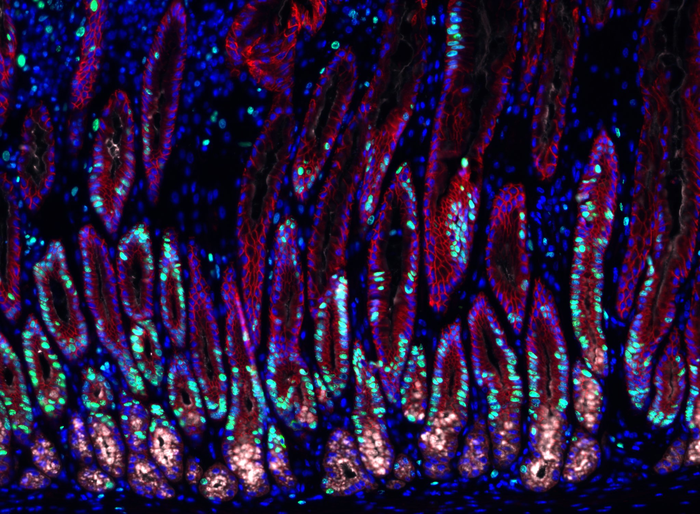
In an era where dogs are increasingly regarded as integral members of the family, a groundbreaking study conducted by researchers at ELTE Eötvös Loránd University has illuminated the intricate nature of the human-dog relationship by positioning it within the framework of human social bonds. Utilizing an innovative multidimensional assessment encompassing thirteen distinct relational scales, this investigation distinctly charts where the canine connection converges with, and diverges from, the bonds humans share with other people in their social networks. The findings, published in Scientific Reports, challenge simplistic notions of dogs merely being pets or proxies for human relationships, revealing instead a complex interplay of companionship, control, and emotional exchange unique to dog ownership.
Historically, dogs transitioned from work-oriented roles—herders, hunters, or guards—to quasi-family members in modern societies, often fulfilling psychological and social needs previously reserved for human relationships. This evolution poses compelling questions about the social function dogs serve today. To address this gap, the researchers compared owners’ perceptions of their dogs’ roles against four archetypal human relationships: child, romantic partner, closest relative, and best friend. The study’s methodology involved surveying over seven hundred dog owners who rated their relationships across thirteen relationship dimensions, ranging from nurturing and security to conflict and control.
The results unveiled a striking paradox: dog-owner bonds encapsulate elements typical of child-parent relationships—such as nurturing and perceived affection—while simultaneously mirroring the low-conflict, companionship-oriented features of best-friendships. This sociopsychological blend, however, is underscored by a pronounced power asymmetry favoring the owner. Unlike human relationships characterized by negotiated equality or mutual influence, dog ownership inherently entails unilateral decision-making authority, shaping the relationship’s emotional texture. Owners consistently reported feeling their dogs exhibited the greatest love and companionship relative to all other partners surveyed.
Beyond emotional gratification, the study elucidates that dog-owner relationships are maintained through sustained human dominance, a form of asymmetric control rarely present in human-human dynamics. This control manifests in owners’ capacity to regulate dogs’ behavior, environments, and routines, which paradoxically enhances relational satisfaction by minimizing conflict and antagonism. Essentially, the predictability and manageability of the canine partner underpin a sense of stability absent from more complex human ties, explaining why many owners find their connection with dogs deeply fulfilling despite the inherent inequality.
Crucially, this research also addresses a prevailing psychological assumption: that dogs serve primarily to compensate for weak human relationships. Contrary to this expectation, the data indicate a positive correlation between the robustness of human networks and the strength of human-dog bonds. Individuals reporting satisfied and supportive human relationships tended to have similarly strong and satisfying relationships with their dogs. This finding suggests that rather than filling an emotional void, dogs function as complementary figures within a broader social support system, enhancing well-being rather than substituting deficient human ties.
The researchers acknowledge, however, sampling limitations, as study participants were volunteers likely skewed towards higher relationship satisfaction with both humans and dogs. This introduces the possibility that the distinctive reliance on dogs as primary emotional supports, often observed in vulnerable populations, remains underrepresented. Future investigations targeting diverse demographics could deepen understanding of how dog relationships adapt under varying social and psychological conditions.
Methodologically, the study’s innovation lies in its adoption of a multidimensional framework to quantitatively dissect dog-owner relationships beyond typical categories such as ‘pet’ or ‘family member,’ thereby capturing nuanced facets of emotional closeness, conflict, power dynamics, and social support. This approach allows for a more precise alignment of canine bonds within the spectrum of human social interactions, enabling comparisons that reveal both shared characteristics and pronounced distinctions grounded in interspecies differences.
Moreover, this research contributes to ethology and social psychology by contextualizing domestication’s long-term impact on behavioral and emotional adaptations in dogs and their human companions. The dog’s evolved role as a socio-emotional partner reflects both biological predispositions and culturally mediated expectations, suggesting a hybrid social niche that blurs boundaries between human kinship and companionship paradigms. For instance, dogs’ high scores in providing relationship security and low antagonism align with evolutionary theories positing that mutualistic bonds between species enhance survival and social cohesion.
From a neurological and biochemical perspective, bonding with dogs may stimulate oxytocin release—a hormone linked to trust and attachment—in owners and pets alike. This biochemical mediating factor likely reinforces positive feedback loops underpinning the satisfaction and affection reported in dog-owner relationships. By maintaining control and reducing conflict, owners may facilitate these neurochemical exchanges, thereby fostering emotional benefits that resemble, but are not identical to, those found in human-human attachments.
Importantly, the power imbalance noted in dog-human relations, with owners exercising almost exclusive control over decisions affecting their dogs, introduces ethical and psychological dimensions that could affect wellbeing and attachment quality. While this asymmetry reduces relational complexity and conflict, it raises questions about autonomy and agency among companion animals, themes increasingly prominent in animal welfare discourse. Understanding how control dynamics influence mutual satisfaction may guide future practices in responsible dog ownership and welfare policies.
The study’s lead authors emphasize the multifaceted nature of dog companionship, highlighting variability among owners. Some seek their dogs for unconditional affection and nurturing opportunities; others value the predictability and low-stress companionship; still others derive psychological stability from caregiving roles inherent in pet ownership. This diversity underlines the inadequacy of one-dimensional labels and invites a richer conceptualization of dogs within human social ecosystems.
In conclusion, this pioneering research establishes that human-dog relationships occupy a unique, hybrid social niche combining the emotional closeness typical of child attachments, the ease and low-conflict features of close friendships, and the predictable structure imposed by human control. These findings deepen our understanding of the social functions dogs serve and challenge reductive views of pets as merely emotional crutches or family substitutes. Instead, dogs emerge as complex social partners whose relationships with humans are defined by both affection and asymmetrical authority, reflecting the evolutionary and cultural tapestry that shapes domestic life.
Subject of Research: Human-dog relationships analyzed through comparison with human-human social bonds using multidimensional relationship scales.
Article Title: Similarities and differences between dog-human and human-human relationships
News Publication Date: 22-Apr-2025
Web References: http://dx.doi.org/10.1038/s41598-025-95515-8
Image Credits: Photo: Eniko Kubinyi
Keywords: Dogs, Social relationships, Animal research, Social networks, Social research, Family, Animal domestication, Bond formation, Ethology
Tags: canine companionship and controlcomparative analysis of human relationshipsdogs as family membersdogs as social facilitatorsdogs in modern societyemotional exchange in pet ownershipevolving roles of dogs in familieshuman-animal bond researchhuman-dog relationship dynamicsperceptions of pet relationshipspsychological benefits of dog ownershiproles of dogs in social networks






